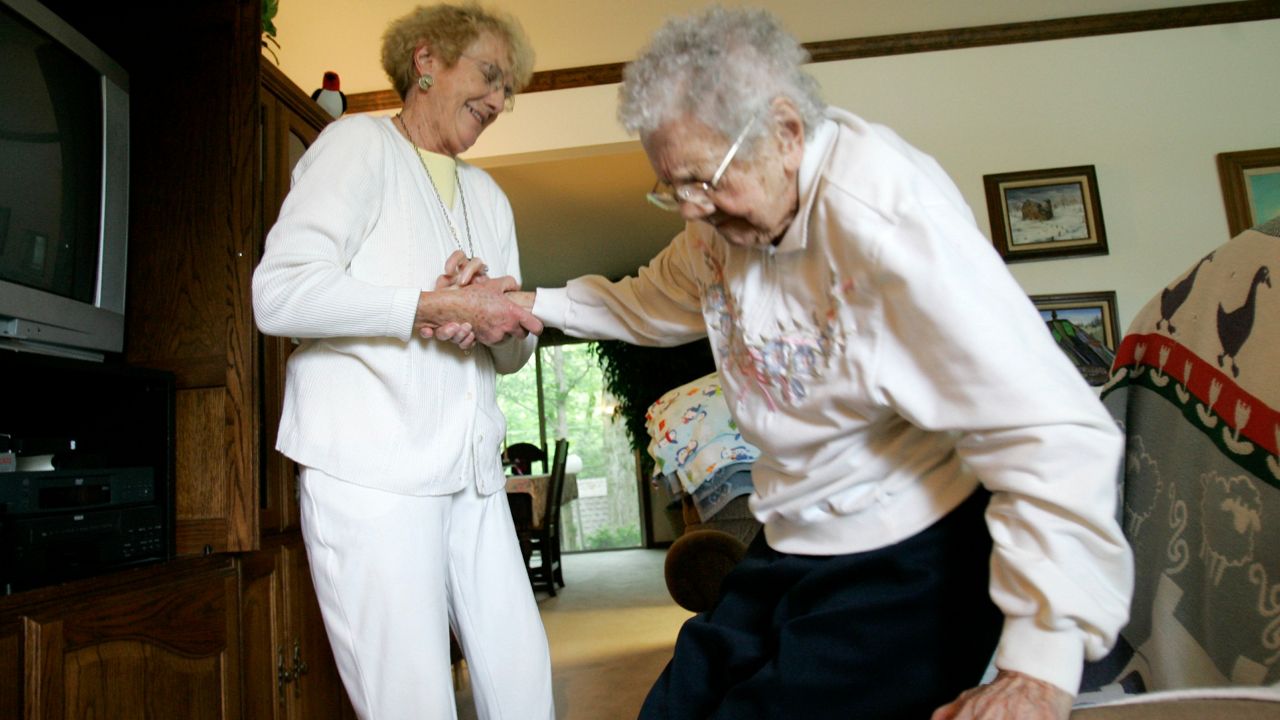Thousands of older Mainers, people with disabilities and those with behavioral health needs are not getting the support services they are entitled to receive, a report released Tuesday shows.
That’s because the state needs more than 2,300 additional full-time home care workers to meet the need, according to a report by the Maine Center for Economic Policy.
The center, a left-leaning think tank based in Augusta, released the report during a summit in Freeport organized in conjunction with the Maine Council on Aging.
The report uses data from the state and caregiver agencies to deliver some startling statistics:
- More than 23,500 hours of approved home care for older adults go undelivered each week.
- The greatest need for those services is in some of the state’s most rural counties, including Somerset, Washington and Aroostook.
- As of March 2024, there were 2,451 people with developmental disabilities or brain injuries on waitlists for services.
- When it comes to mental health counseling, 8,812 clients were waiting for help with an average wait time of 32 weeks, according to a point-in-time survey of 50 organizations conducted in January and February of this year.
“Another issue which warrants further attention is the long-term health impacts and costs of failing to provide the support and services people need,” the report states. “Those who are unable to access all the care they need, including people on waitlists who are not receiving any professional supports and services, are more likely to require more expensive acute health care and suffer negative health impacts.”
Amid all the data, two direct care workers addressed summit attendees Tuesday to share their experiences in the field. Sharon Deschenes and Justin Dyer said they hope the next generation of caregivers will be there for them when the time comes.
“I know some day I’m going to be where they are,” Deschenes said. “I want some young lady or young man to come in and say to me ‘how are you doing today? Let’s see what we can do to better your day.’”
While the report references what it calls “complicated reasons” for the care gap, it identifies the biggest driver as staffing.

“Despite fewer workers, Maine’s demographics mean demand for these services will only continue to grow while the available pool of potential workers will likely continue to shrink,” according to the report.
Projections show that the share of Maine people aged 65 or older is projected to grow from 22% in 2020 to 29% by 2050. Nationally, the average is expected to be just 21%.
In addition to a growing number of people needing services, more Mainers are also choosing to age in place rather than move to a nursing home, the report notes.
Despite the shortages, the report credits the state with working toward solutions, including increasing reimbursement rates to help raise wages and $120 million in federal funds to pay bonuses to direct care workers.
The Maine Department of Health and Human Services issued bonuses that averaged $3,429 to 24,000 direct care workers.
The report calls on the state to do a better job with data collection and worker training. It also says reimbursement rates for the labor portion of direct care should be increased from 125% of the state minimum wage to 140%.
“What we found looking at the comparison between the wages that these workers earn now and other workers in our economy who are similarly situated, they are underpaid by about a dollar and 92 cents per hour compared to those other workers,” Arthur Phillips, the economic policy analyst who wrote the report, told Spectrum News Tuesday.
The report follows a 2023 study that estimated that 8,000 workers are not in the labor force because they are caring for an older family member or someone with a disability. That impacts the state’s gross domestic product and revenues.
“The absence of these workers from the workforce is costing Maine’s economy close to $1 billion in lost GDP and reducing state and federal revenues by as much as $70 million,” the report found.





